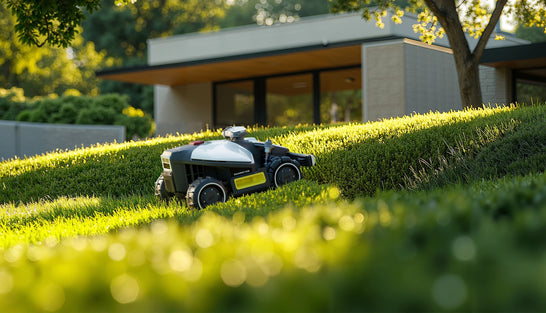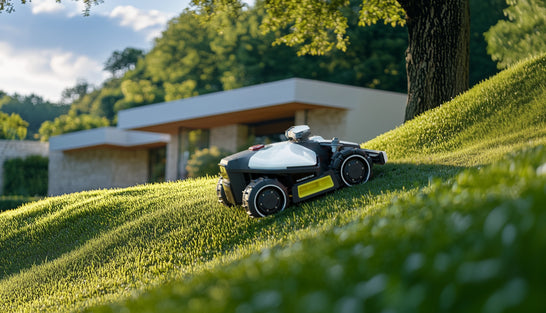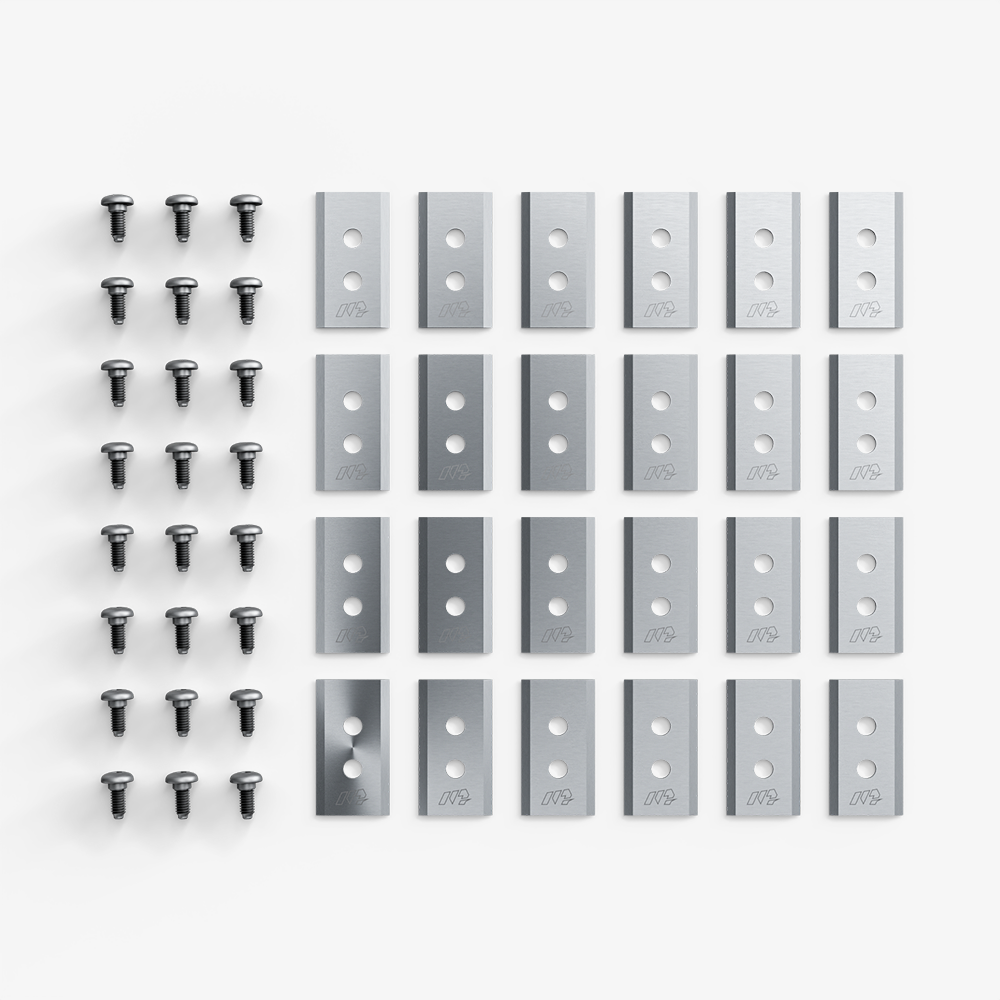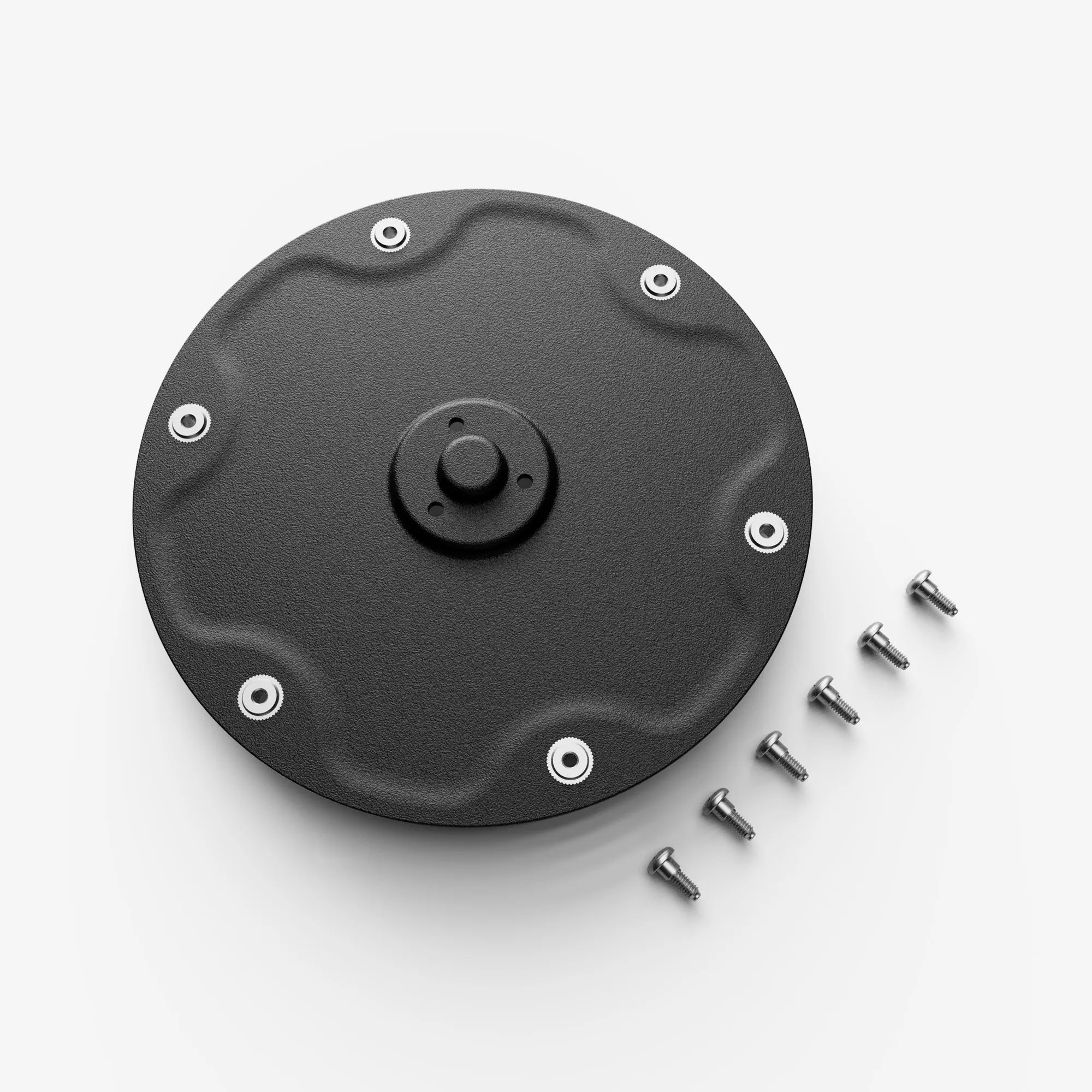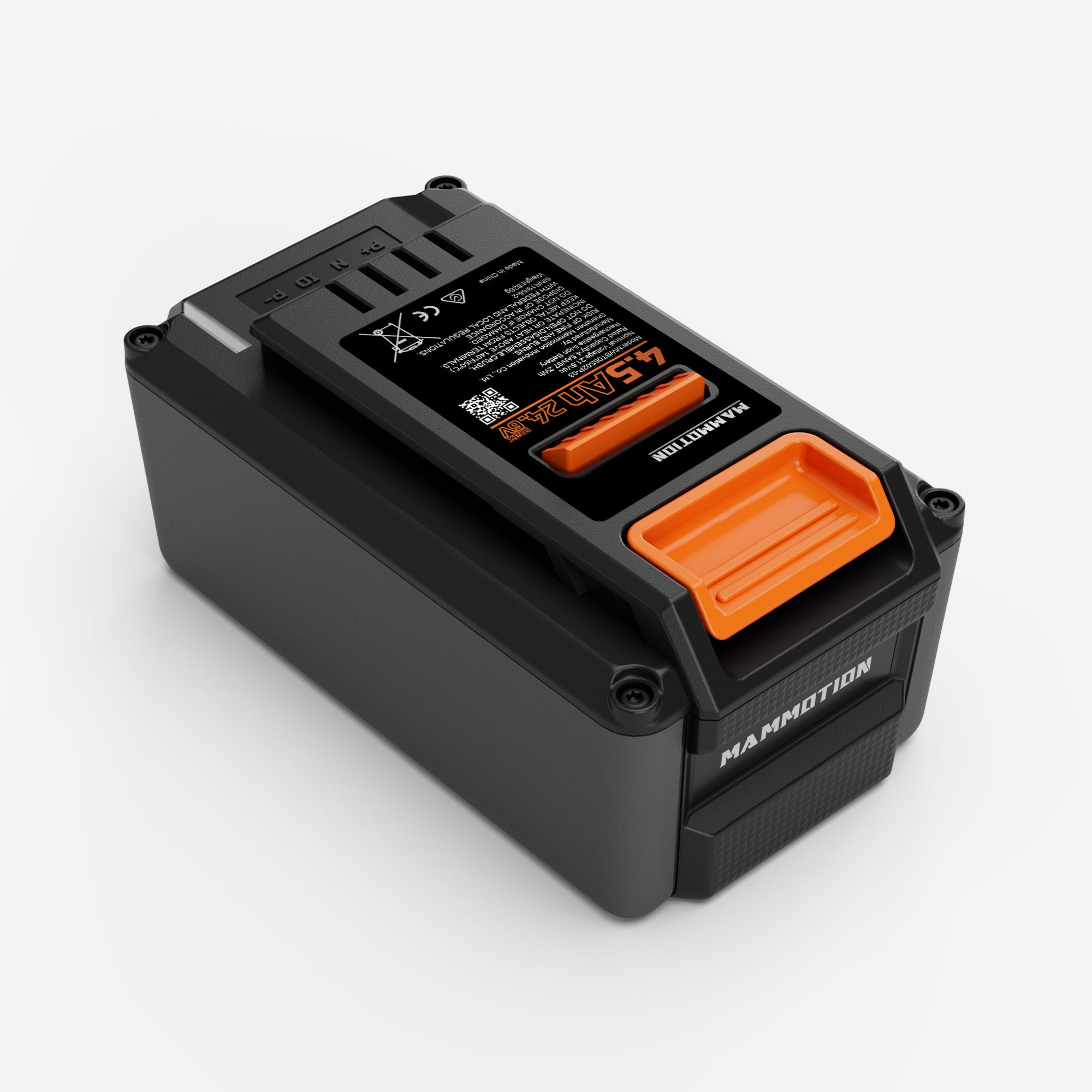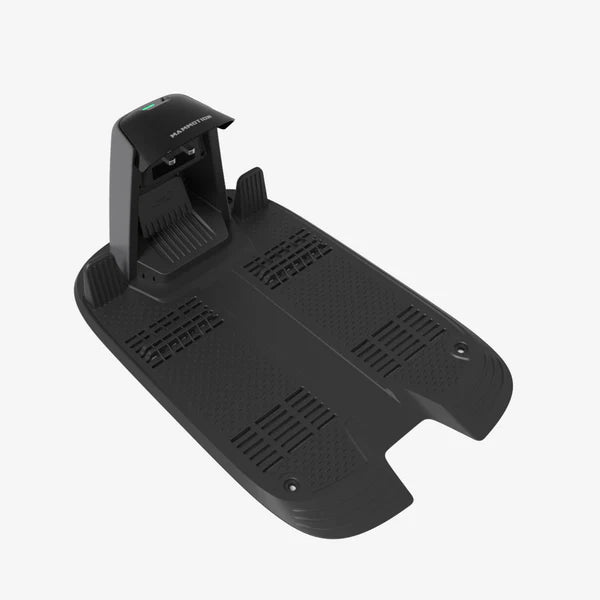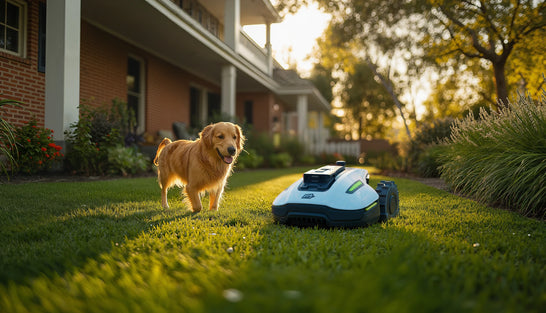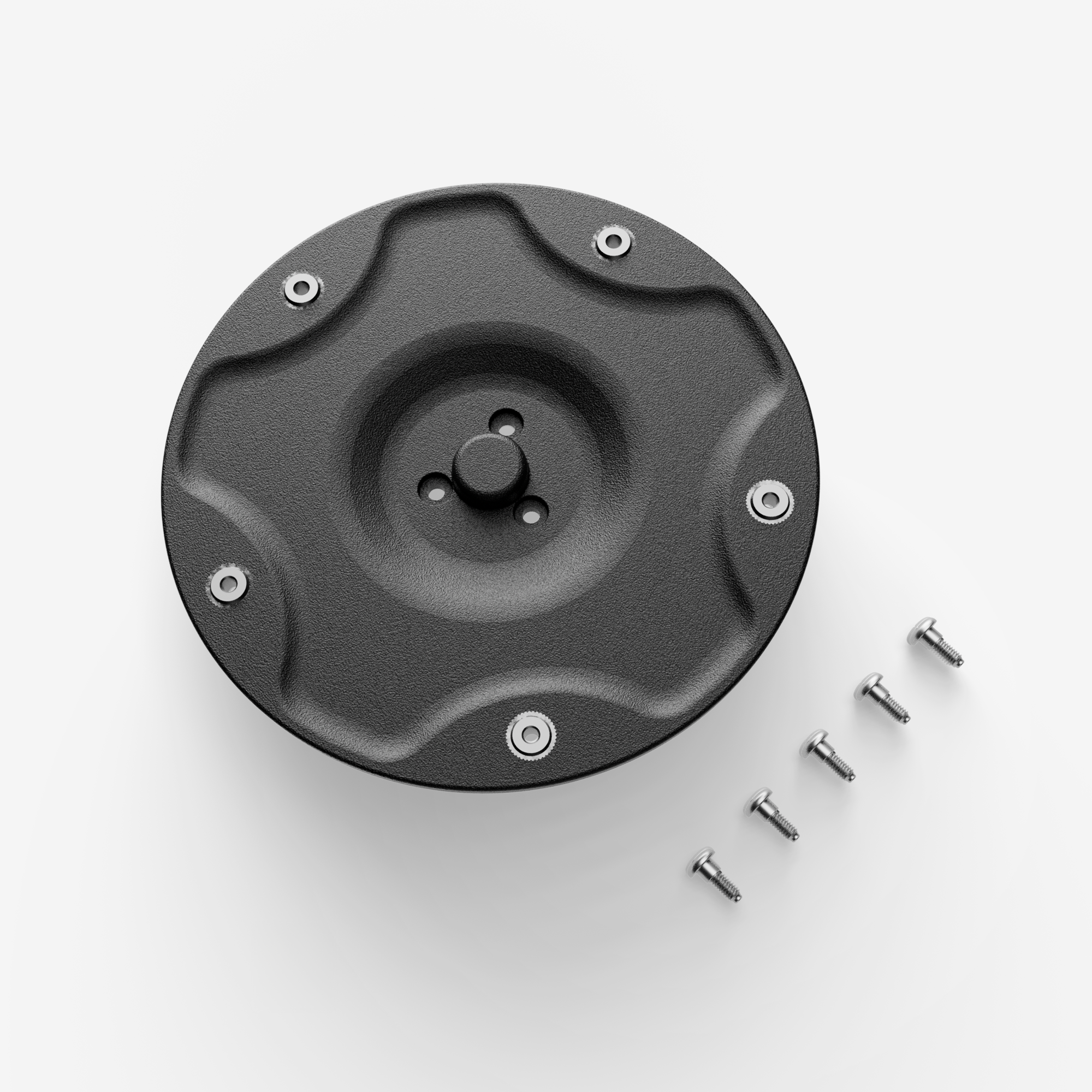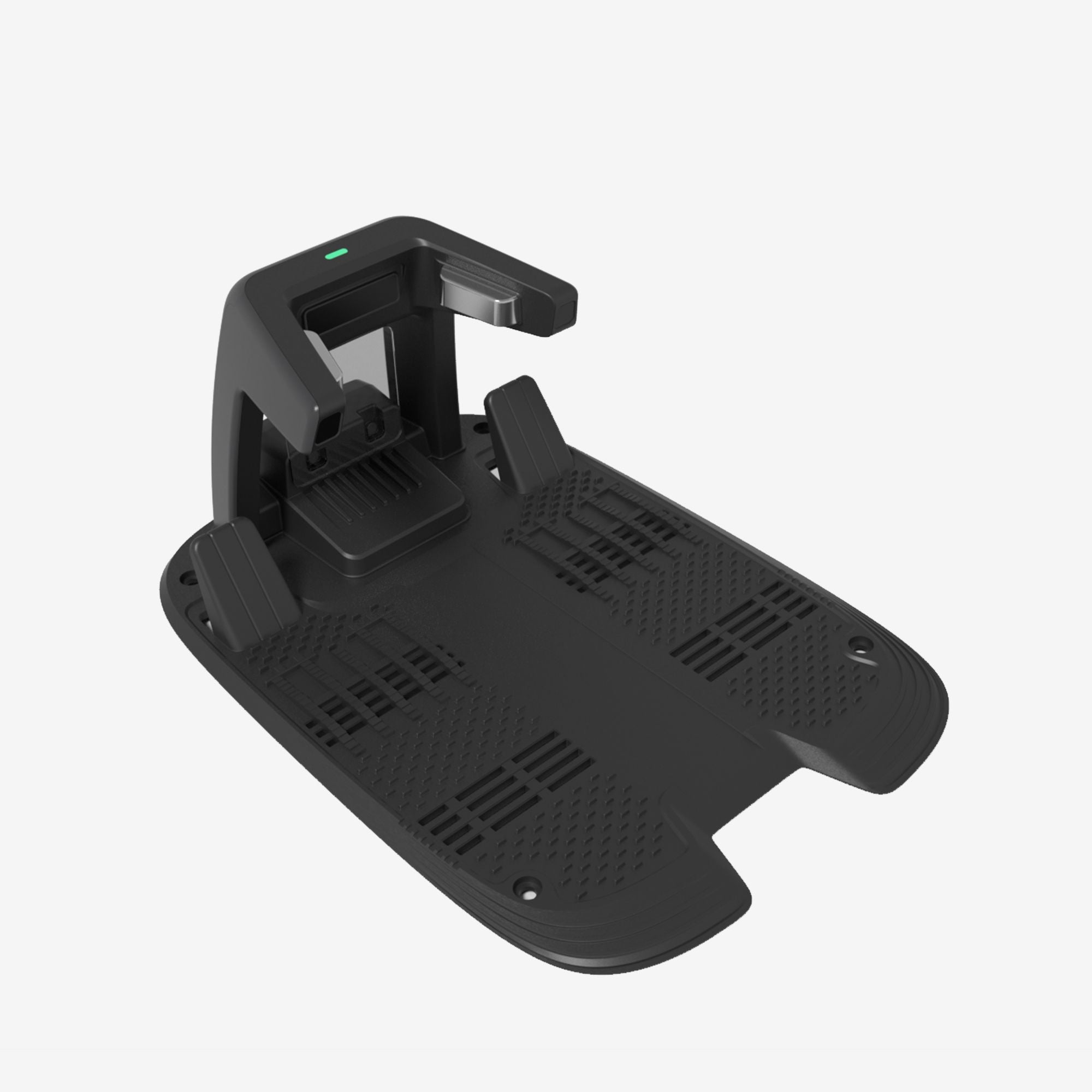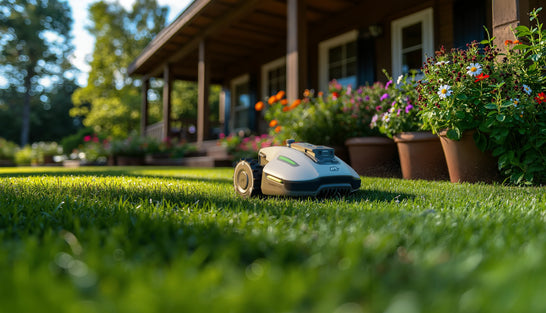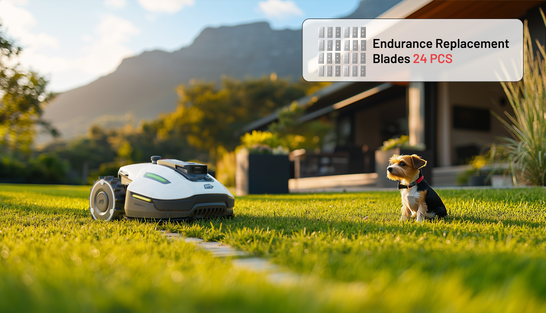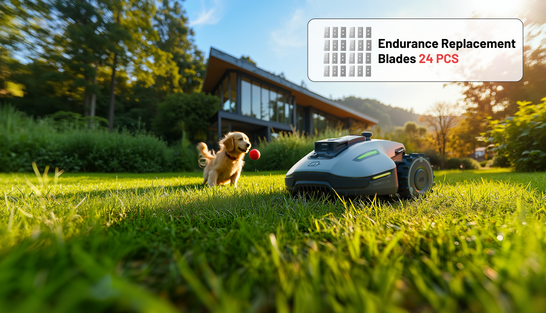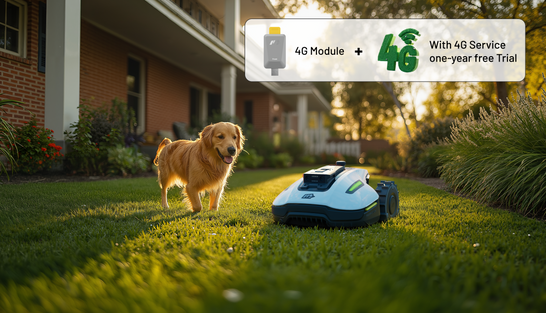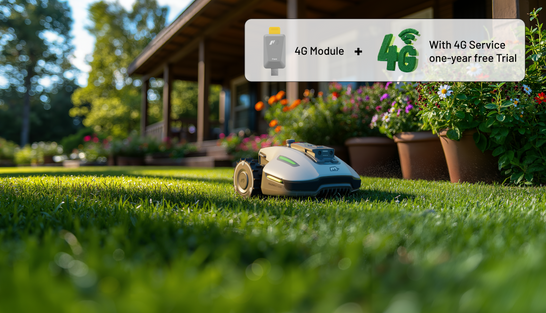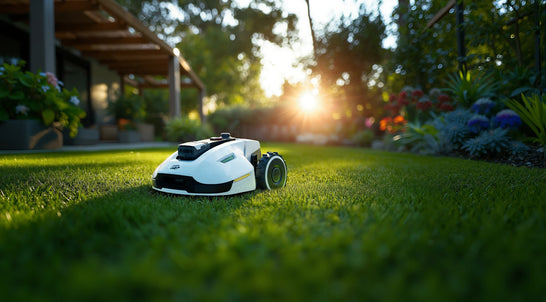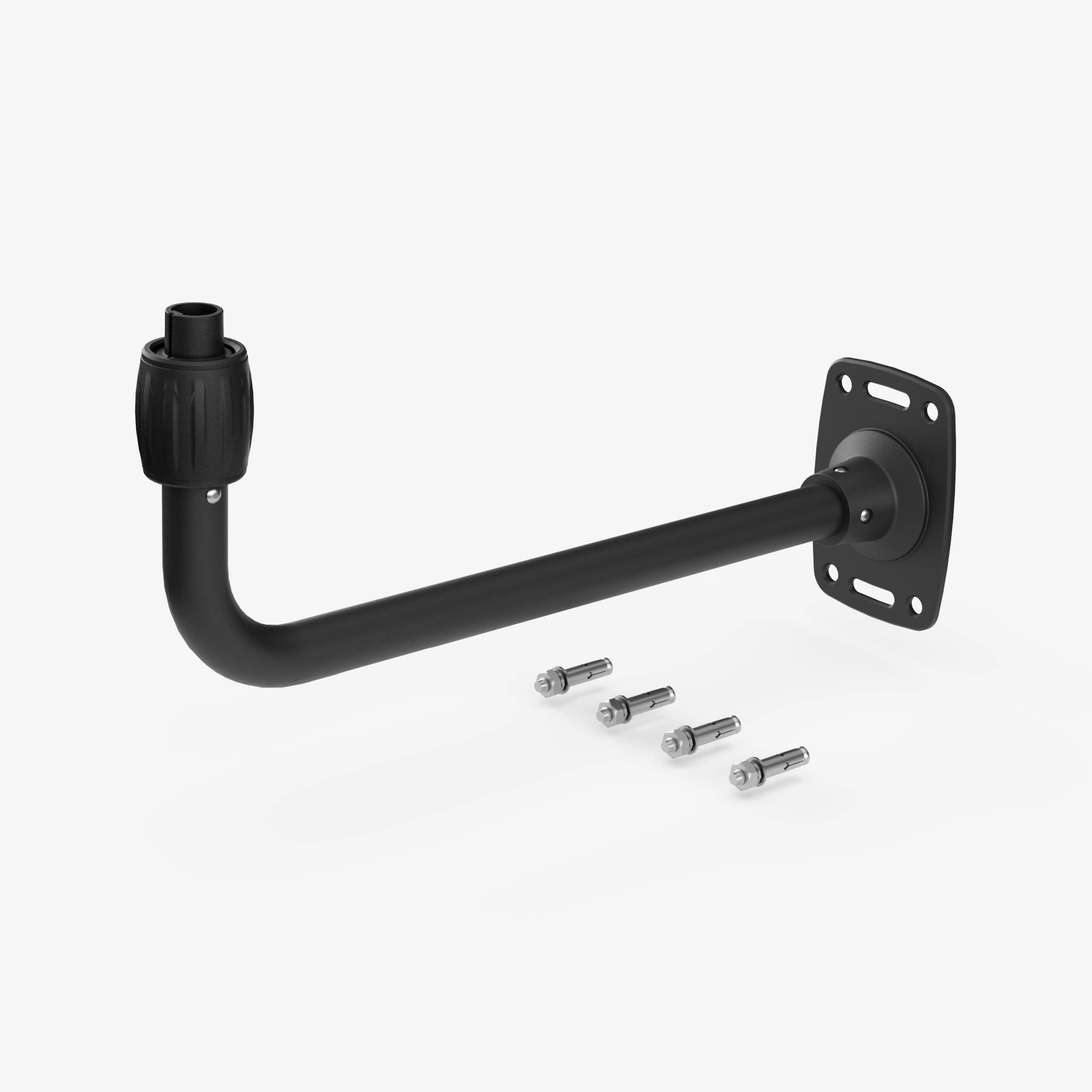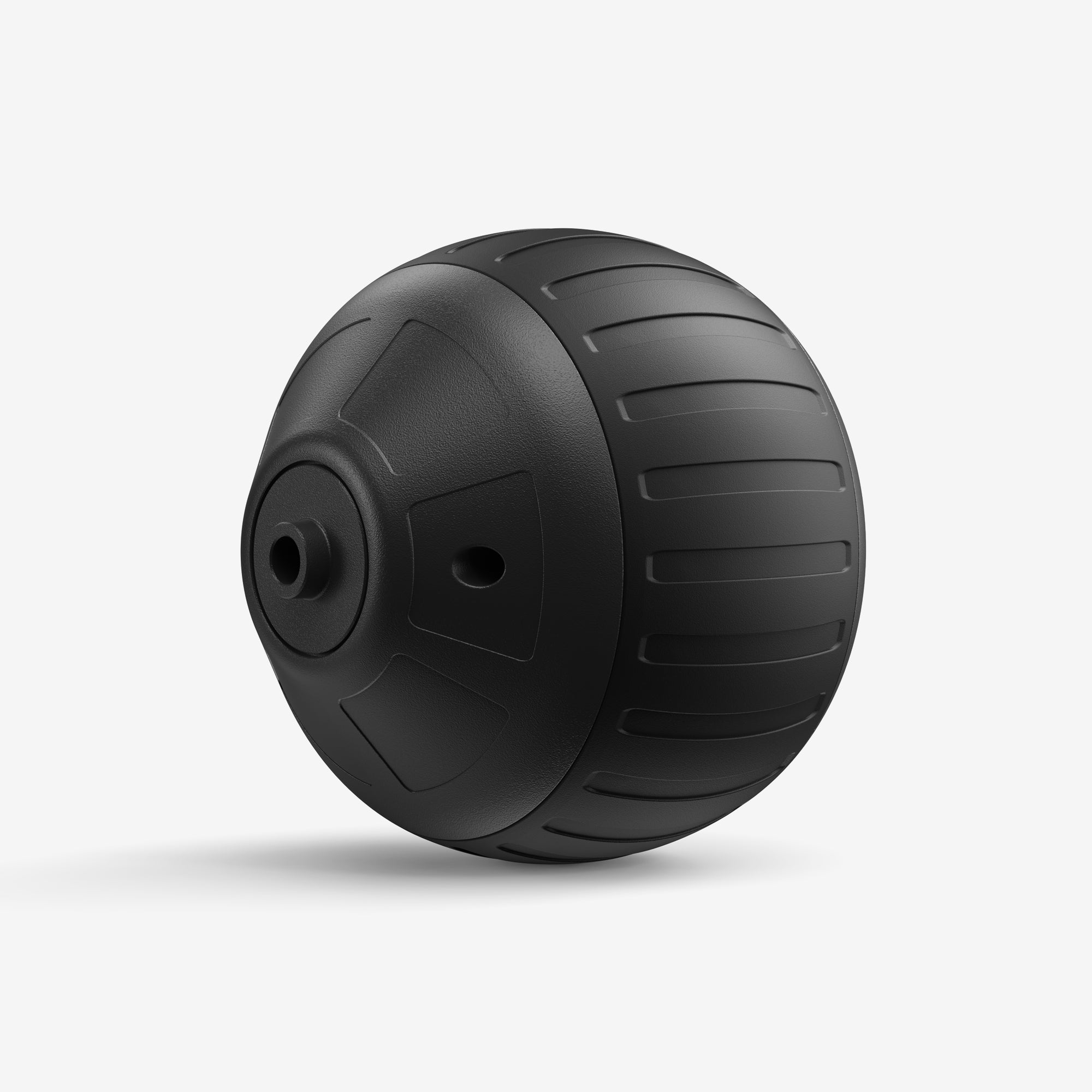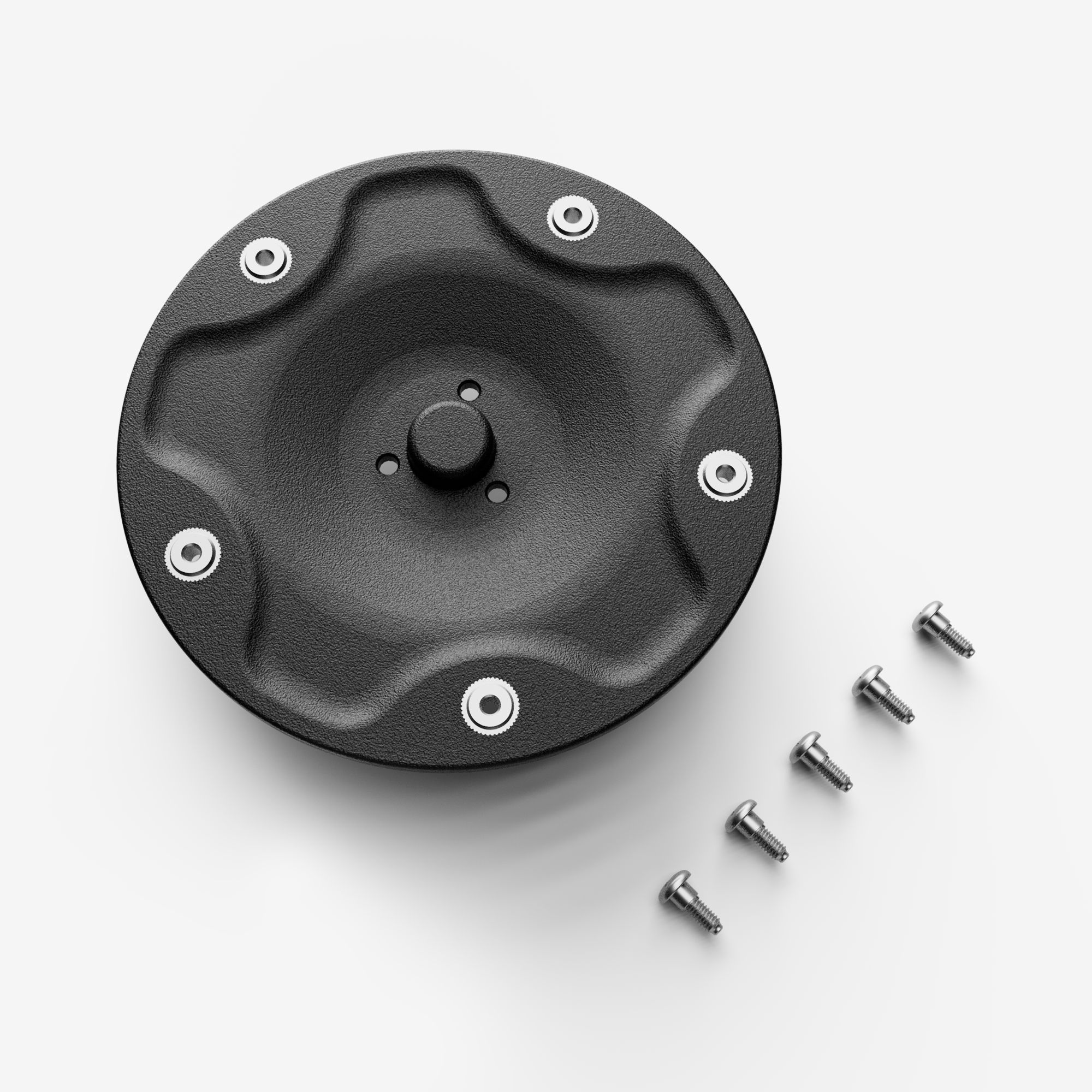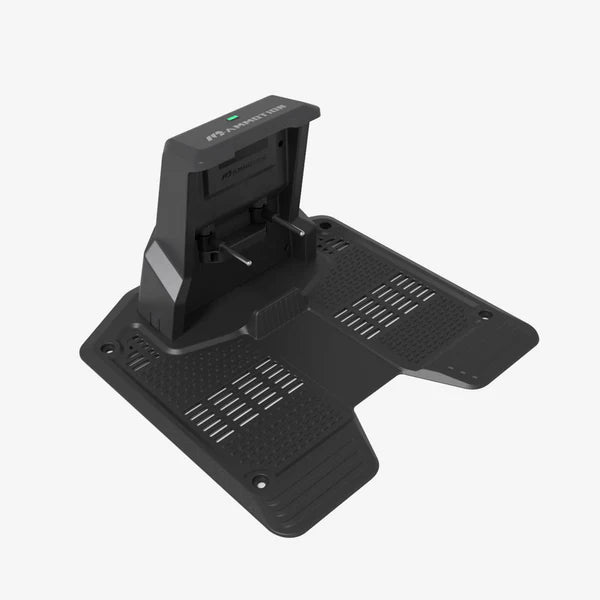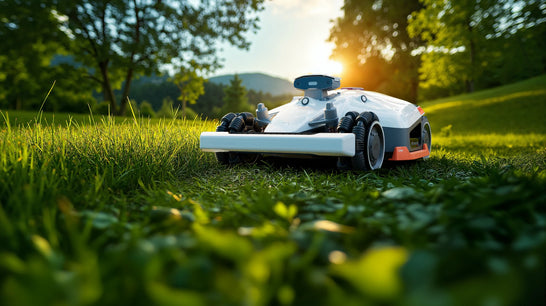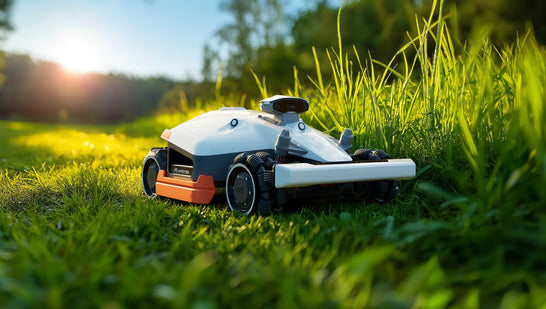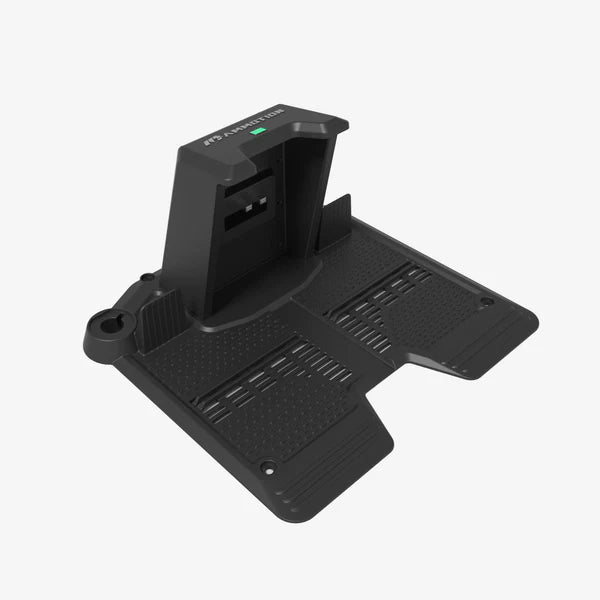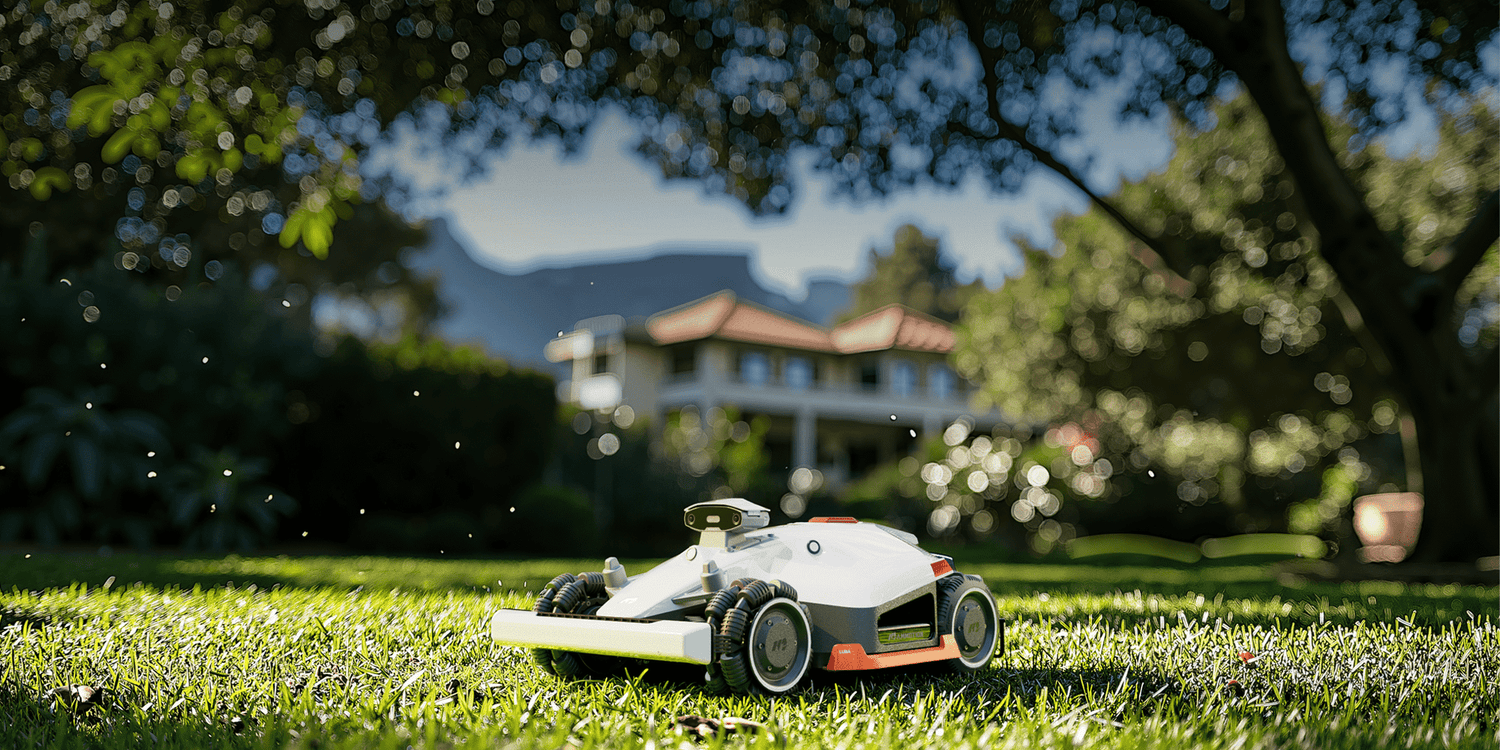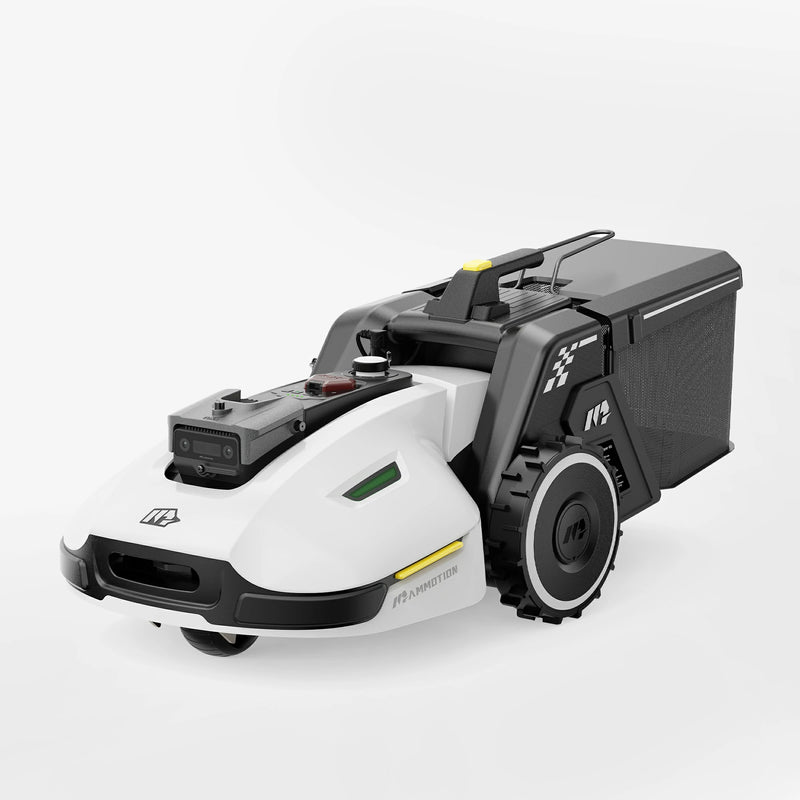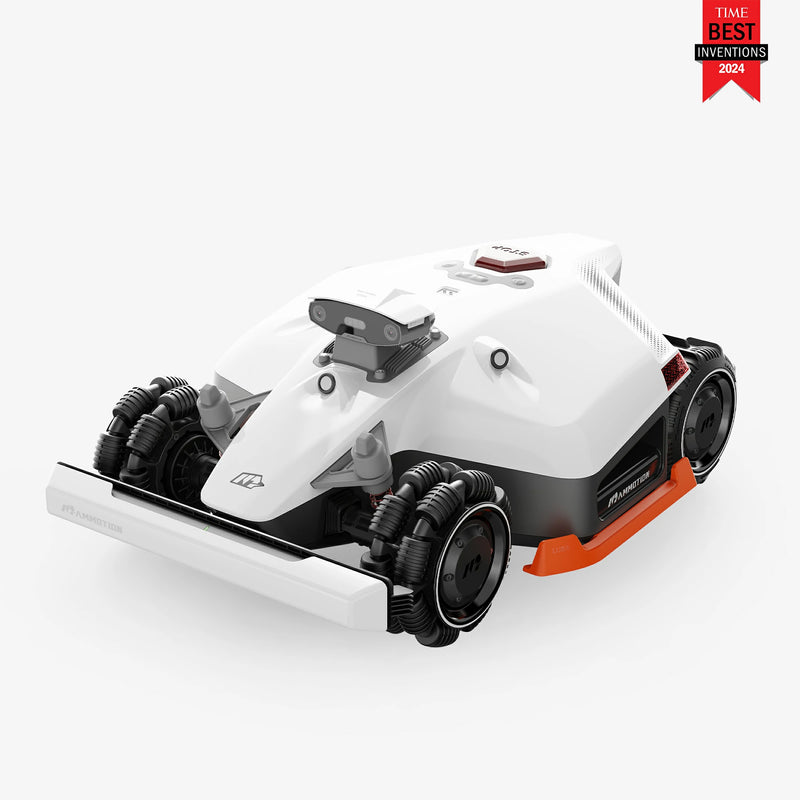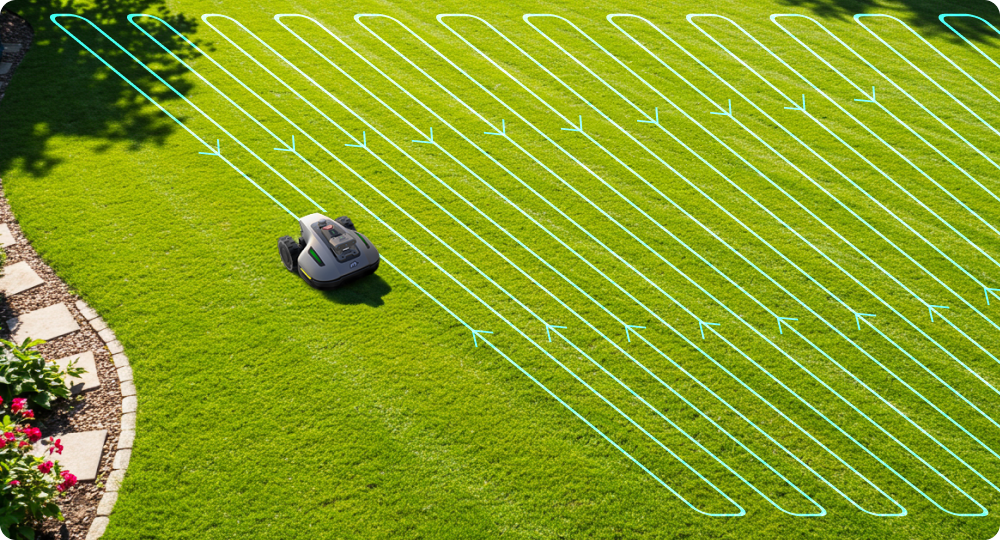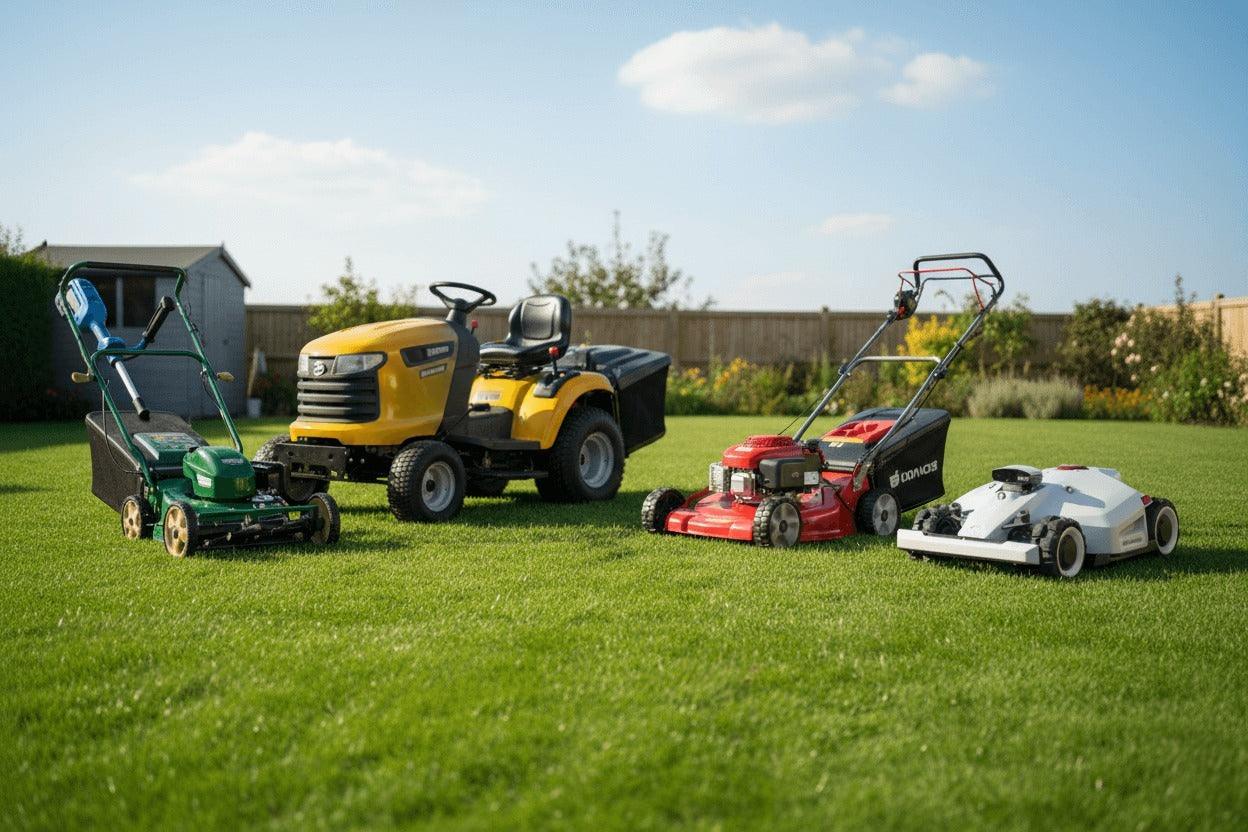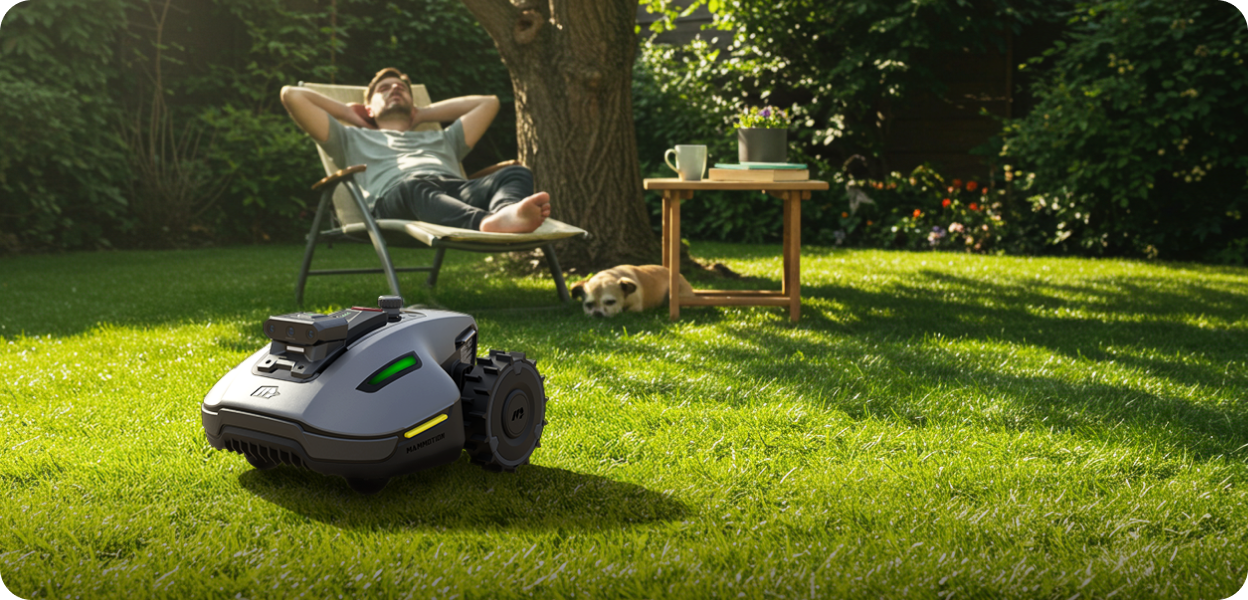Imagine stepping onto your porch, sipping a coffee, and watching your lawn stay perfectly trimmed—without ever pushing a mower. That’s the promise of the automatic lawn mower, a fast-growing category of smart yard technology that’s reshaping how homeowners care for their grass.
In 2025, the demand for these machines is booming. Industry reports project the robotic mower market will grow at more than 20% annually, driven by homeowners who want the same convenience in their yard as they enjoy from robot vacuums indoors. Unlike gas-powered push mowers, today’s automatic models use AI navigation, GPS mapping, and mulching systems to maintain lawns quietly and efficiently, all while reducing emissions.
But with so many new features, brands, and price points, many people are asking the same questions: What exactly is an automatic lawn mower? How does it work? And is it really worth the investment compared to a traditional mower?
This guide breaks it all down. We’ll explore how automatic lawn mowers work, the benefits and trade-offs, the best models available in 2025, and how to choose the right one for your yard. Whether you’re a tech-savvy homeowner or simply tired of weekend mowing chores, this article will give you the expert insight you need to decide if an automatic lawn mower belongs in your garage.
What is an Automatic Lawn Mower?
An automatic lawn mower is a battery-powered, self-driving machine that cuts grass on its own without human supervision. Often called robotic lawn mowers or autonomous mowers, these devices use a combination of sensors, GPS navigation, and smart software to move around your yard, trim grass, and return to their charging dock automatically when the job is done.
Unlike traditional push or ride-on mowers, which require time and effort from the homeowner, automatic lawn mowers are designed for set-it-and-forget-it convenience. Once installed and programmed, they operate much like a robotic vacuum cleaner: quietly patrolling the yard, mowing frequently in short cycles, and keeping grass consistently healthy through natural mulching.
It’s also important to understand the difference in terminology:
- Automatic Lawn Mower → General term often used by consumers searching for hands-free lawn care.
- Robotic Lawn Mower → The technical category name used by most manufacturers.
- Smart Lawn Mower → Models that integrate with Wi-Fi, mobile apps, and smart-home assistants for remote control.
By 2025, automatic mowers have evolved beyond early models that relied solely on perimeter wires. Today, premium machines use real-time kinematics (RTK), SLAM mapping, and AI object recognition, giving them the ability to navigate complex yards, avoid pets or obstacles, and deliver a precise cut even along edges and slopes.
For homeowners, this means less time mowing, fewer emissions compared to gas mowers, and a healthier lawn maintained with little effort.
How Do Automatic Lawn Mowers Work?
At their core, automatic lawn mowers are designed to do one job—keep your grass consistently trimmed—without you lifting a finger. They achieve this through a blend of sensors, navigation systems, and smart programming that allows them to operate much like a robotic vacuum, only outdoors.
Here’s a breakdown of the main systems that make it possible:
1. Navigation and Mapping
- Boundary Systems: Entry-level models still rely on boundary wires installed around the yard. These act like an invisible fence, telling the mower where it can and can’t go.
- GPS + RTK (Real-Time Kinematics): Advanced mowers use satellite-based positioning combined with reference stations to achieve accuracy within a few centimeters. This allows them to mow in neat patterns rather than random paths.
- Lidar + Vision: Some of the latest models incorporate lidar + vision mapping, letting the mower “learn” your yard layout, obstacles, and paths without external wires.

2. Sensors and Obstacle Detection
- Automatic lawn mowers are packed with safety sensors. Ultrasonic detectors, bump sensors, and sometimes even cameras help them detect pets, toys, or garden furniture in their path. When an obstacle is detected, the mower will slow down, reroute, or stop its blades.
3. Cutting System
- Most mowers use multiple small, sharp blades instead of one large rotary blade. They trim a little bit of grass at a time but do so frequently. This produces fine clippings that act as natural mulch, feeding nutrients back into the soil and promoting healthier growth.
4. Power and Charging
- Powered by rechargeable lithium-ion batteries, the mower automatically returns to its docking station when it needs more energy. This self-charging feature ensures your lawn stays maintained without scheduling conflicts.
5. Smart Controls
- Modern models connect via Wi-Fi or Bluetooth, allowing homeowners to set mowing schedules, track progress, or adjust settings through a smartphone app. Some even integrate with voice assistants like Alexa or Google Home.
In simple terms: an automatic lawn mower is like a personal gardener that never gets tired. It navigates your yard, trims the grass consistently, and recharges itself—all while you relax.
Benefits of Automatic Lawn Mowers
Investing in an automatic lawn mower is about more than just convenience—it can improve your lawn’s health, save you time, and even reduce your environmental footprint. Here are the key benefits homeowners notice once they make the switch:
1. Hands-Free Convenience
No more pushing a heavy mower in the heat or rearranging your weekend around yard work. Once set up, an automatic mower quietly handles the job on its own, keeping your grass at the perfect length with minimal effort.
2. Healthier Lawns with Mulching
Because these machines mow frequently and trim only a small amount each time, the clippings are fine enough to act as natural fertilizer. This mulching process returns nitrogen to the soil, helping your lawn grow thicker and greener without added chemicals.
3. Time Savings
The average homeowner spends 50+ hours a year mowing the lawn. An automatic mower gives that time back—whether you want more weekends with family, time for hobbies, or simply the ability to relax while your lawn stays neat.
4. Eco-Friendly Operation
Most automatic mowers are battery-powered, meaning they produce zero direct emissions and operate far more quietly than gas mowers. For eco-conscious homeowners, this makes them a cleaner, greener alternative.
5. Smart Control & Integration
Through mobile apps, you can adjust mowing schedules, monitor progress, or pause the mower—all from your phone. Many newer models also connect with smart-home systems, letting you control them with simple voice commands.
6. Quiet Performance
Unlike gas-powered machines that roar across the yard, automatic lawn mowers operate at a whisper-quiet level—some as low as 55 dB. This means you can run them early in the morning, late at night, or even while you’re hosting guests without disturbing anyone.
7. Year-Round Lawn Consistency
Instead of the “cycle” of grass growing long and then being cut short, automatic mowers keep your lawn trimmed at a steady height. This not only looks better but also prevents stress on the grass, making it more resistant to drought and weeds.
Challenges & Considerations of Automatic Lawn Mowers
While an automatic lawn mower can feel like a dream upgrade, it’s not without trade-offs. Before making the investment, homeowners should be aware of a few key considerations:
1. Higher Upfront Cost
Automatic lawn mowers typically cost $800–$3,000+, depending on yard size and features. While they save money on fuel and professional lawn services over time, the initial purchase price is higher than a traditional push or gas mower.
2. Yard Suitability
Not all lawns are created equal. Models designed for small, flat suburban yards may struggle on steep slopes, highly uneven terrain, or yards cluttered with trees and flowerbeds. High-end models with all-wheel drive and AI navigation handle complexity better—but at a premium price.
3. Boundary Setup & Calibration
Some models still require perimeter wires to be installed. This adds time and effort during setup and may require occasional repairs if the wire is damaged by gardening or pets. Wire-free models with GPS and RTK are available, but they cost more.
4. Maintenance Needs
Although they require less attention than gas mowers, automatic mowers still need regular care:
- Blades must be sharpened or replaced every few months.
- The undercarriage should be cleaned to prevent grass buildup.
- Battery life typically spans 2–5 years before replacement.
5. Navigation Hiccups
Even with advanced sensors, automatic mowers aren’t perfect. They can occasionally get stuck on unexpected obstacles like fallen branches, children’s toys, or deep ruts. Owners need to occasionally “rescue” the mower if it runs into trouble.
6. No Grass Collection
Most automatic lawn mowers are designed for mulching, not bagging clippings. For homeowners who prefer a perfectly “bagged” look, this may be a limitation. But Mammotion YUKA is a 2-in-1 Self-empty Lawn Sweeper Kit to choose from.
Bottom line: An automatic lawn mower can be a powerful time-saver, but choosing the right model for your yard and budget is crucial. Understanding the trade-offs up front will help you avoid surprises later.
Best Automatic Lawn Mowers in 2025
Here are top-tier automatic lawn mower choices in 2025 tailored for different needs—whether you're tackling steep slopes, managing large lawns, or seeking smart automation:
|
Model |
Key Features |
Best For |
|
Roborock RockMow Z1 / S1 / Neo Q1 |
AWD, PreciEdge cutting deck, AI + RTK navigation, extreme slope handling |
High-tech precision & edge trimming |
|
Sunseeker X3 Plus |
Wire-free GPS/vision navigation, no boundary wire, Lidar-AI roadmap |
Medium yards, future-ready tech |
|
Honda Miimo Series |
Smart Timer, boundary-wire navigation, micro-mulching, multi-model lineup |
Reliability, brand trust |
|
Mammotion LUBA 2 AWD |
Wire-free RTK + 3D vision, AWD, up to 80% slope handling, multi-zone/no-go zones, voice and app controls |
Tough terrain, large/complex lawns |
Mammotion LUBA 2 AWD Automatic Lawn Mower
The Mammotion LUBA 2 AWD stands out with its boundary-wire-free setup, using RTK, GPS, binocular AI vision, ultrasonic radar, and 3D mapping to navigate dynamically across lawns of varying complexity.
What makes it exceptional:
- All-Wheel Drive & Terrain Mastery: Climbs slopes up to 80% (38.6°) thanks to AWD, omni-wheels, and adaptive suspension.
- Wide Coverage + Flexibility: Offers versions covering lawns from ~0.1 to 2.5 acres (1000–10,000 m²), supports up to 60 zones, and features multi-zone/no-go zone management.
- Advanced Customization: Patterns like parallel, checkboard, diamond grid; adjustable cutting heights; voice assistant control (Alexa, Google); app with live video, mowing patterns, and even “lawn printing” to create on-lawn designs.
- Smart Operation: Has rain detection, auto-recharge and resume, anti-theft features including 4G tracking and ownership authentication, along with OTA firmware capabilities.
Review Highlights:
- TechWalls praises its hands-off reliability on complex terrain and dual-disc cutting precision.
- Trusted Reviews emphasizes its robust build, effective AWD drive and navigation even over divots.
- Reddit feedback echoes both the potential and real-world challenges—users share successful multi-acre mowing sessions but express concerns over software reliability and customer support.
Bottom Line: For homeowners with uneven, large, or technically complex lawns, the Mammotion LUBA 2 AWD delivers unmatched automation and precision—just be prepared for a learning curve in app complexity and stay aware of real-user service experiences.
Buyer's Guide – How to Choose the Right Automatic Lawn Mower
With so many models on the market in 2025—from entry-level budget picks to premium AI-powered machines—it’s important to match the mower to your specific lawn and lifestyle. Here are the key factors to consider before investing:
1. Lawn Size and Coverage
- Small Yards (<0.25 acres / 1,000 m²): Budget-friendly models like the Sunseeker X3 Plus or Lidl PARKSIDE are sufficient.
- Medium Yards (0.25–0.75 acres / 1,000–3,000 m²): Consider GPS-enabled models like Honda Miimo or Roborock RockMow.
- Large Yards (up to 2.5 acres / 10,000 m²): Advanced machines such as the Mammotion LUBA 2 AWD excel, especially when handling multiple zones.
2. Terrain and Slope
- Flat lawns → Any mower will do.
- Slopes up to 35% → Mid-range models with traction control.
- Steep, uneven lawns up to 80% → AWD machines like the LUBA 2 or Roborock Z1 are essential.
3. Navigation System
- Boundary wire models: Affordable but require setup and occasional repairs.
- GPS/RTK models: Wire-free, precise patterns, ideal for large/complex lawns.
- LIDAR + Vision navigation: Premium models with obstacle recognition, better adaptability.
4. Cutting Performance
- Adjustable height is crucial for different grass types.
- Look for multi-blade discs for a cleaner finish.
- Edge-cutting decks (e.g., Roborock RockMow) reduce the need for manual trimming.
5. Smart Features & Connectivity
- Mobile apps: Schedule, monitor, and control mowing remotely.
- Voice control: Integration with Alexa or Google Assistant.
- Zone control: Define “no-go” zones, multi-zone management, and customized mowing patterns.
6. Maintenance & Reliability
- Check warranty length (2–3 years is typical).
- Ensure replacement blades and batteries are easily available.
- Look for OTA (over-the-air) software updates to future-proof the machine.
7. Budget Considerations
- Entry-level: ~$500–$800
- Mid-range: $1,000–$1,800
- Premium AI + AWD: $2,000–$3,500+
Pro Tip: Don’t just buy for today’s yard—choose a mower that can scale if you expand your lawn or landscaping. A slightly higher upfront investment often saves money and frustration long term.
Maintenance & Safety Tips for Automatic Lawn Mowers
Even the most advanced automatic lawn mower requires periodic maintenance and safety checks to ensure peak performance, longevity, and safe operation. Here’s a practical guide:
1. Regular Blade Maintenance
- Inspect blades every 4–6 weeks during the mowing season.
- Sharpen or replace worn blades to maintain a clean cut and prevent lawn stress.
- Keep blades free from debris to avoid motor strain.
2. Cleaning & Undercarriage Care
- Remove grass clippings, dirt, and mulch buildup under the mower deck.
- Use a damp cloth or brush—never submerge in water.
- Clean sensors and wheels to prevent navigation errors.
3. Battery Care
- Charge according to manufacturer guidelines; avoid overcharging or letting it fully drain repeatedly.
- Store batteries indoors during winter for optimal lifespan.
- Consider a replacement schedule: most lithium-ion batteries last 2–5 years.
4. Software Updates
- Many modern mowers, like the Mammotion LUBA 2 or Roborock RockMow, receive over-the-air updates.
- Keep firmware up-to-date to improve navigation, obstacle detection, and security features.
5. Safety Checks
- Ensure safety sensors are functioning correctly (blade stops when lifted or tipped).
- Keep children and pets away during mowing sessions.
- Check anti-theft features and lock the mower if leaving unattended.
6. Seasonal Storage
- Store the mower in a dry, sheltered area during winter.
- Remove or fully charge the battery before storage.
- Clean the chassis and apply a light protective coating to prevent rust.
Pro Tip: Even premium models like Mammotion LUBA 2 AWD and Roborock RockMow benefit from regular maintenance—small routine steps prevent major issues and maximize your investment over years.
Conclusion – Should You Buy an Automatic Lawn Mower in 2025?
By 2025, automatic lawn mowers have evolved from niche gadgets into powerful, reliable, and increasingly accessible tools for homeowners. With advances in AI navigation, RTK/GPS mapping, all-wheel drive, and app-based controls, these machines offer a level of convenience and precision that traditional push mowers simply can’t match.
Of course, they aren’t perfect. Upfront costs, terrain limitations, and occasional maintenance are factors to consider. However, for homeowners willing to invest in hands-free, efficient, and intelligent lawn care, the benefits far outweigh the drawbacks.
Bottom line: If you want a consistently healthy lawn with minimal effort—and enjoy the convenience of modern smart-home technology—an automatic lawn mower is a smart, future-ready investment for 2025 and beyond.
Frequently Asked Questions
1. What is an automatic lawn mower?
An automatic lawn mower, also known as a robotic lawn mower, is a battery-powered device that autonomously trims your lawn. It uses sensors, GPS, or boundary wires to navigate your yard, returning to its charging station when needed. These mowers can operate on schedules, offering a hands-free solution to lawn maintenance.
2. How does an automatic lawn mower navigate my yard?
Navigation methods vary:
Boundary Wire: Traditional models use a boundary wire to define the mowing area.
GPS/RTK Navigation: Advanced models employ GPS or RTK systems for precise mapping and navigation.
Vision-Based Systems: Some mowers utilize cameras and AI to detect obstacles and plan mowing paths.
Lidar+Vision: Some manufacturers begin to use Lidar for navigation.
3. Do I need to install a boundary wire for an automatic lawn mower?
Not necessarily. While many models require boundary wire installation, newer models like the Mammotion LUBA 2 AWD and Sunseeker X3 Plus offer wire-free navigation using GPS and vision systems.
4. How often should I run my robot mower?
The frequency depends on your lawn's size, grass type, and growth rate. Generally, running the mower every other day is sufficient. Some models allow scheduling via mobile apps for convenience.
5. Are automatic lawn mowers noisy?
No, they are relatively quiet. Most models operate at noise levels comparable to a normal conversation (around 60 dB), making them suitable for daytime use without disturbing neighbors.
husqvarna.com
6. Do I need to collect grass clippings when using an automatic lawn mower?
No. Automatic mowers typically mulch the grass into fine clippings, which naturally decompose and fertilize your lawn, eliminating the need for collection.
7. How do I install an automatic lawn mower?
Installation varies by model:
Boundary Wire Models: Set up the charging station and lay the boundary wire around the mowing area.
Wire-Free Models: Place the charging station, set up GPS beacons, and use the mobile app for mapping.
Tom's Guide
8. Are automatic lawn mowers safe for pets and children?
Yes, most models are designed with safety features such as collision sensors and automatic blade stops when lifted. However, it's advisable to supervise pets and children during operation.
9. What maintenance do they require?
Regular maintenance includes:
• Cleaning the mower and charging station.
• Checking and replacing blades as needed.
• Ensuring the charging contacts are clean.
• Updating software or firmware if applicable.
10. Can I control my automatic lawn mower remotely?
Yes, many modern models offer mobile app integration, allowing you to schedule, monitor, and control your mower remotely. Some also support voice commands via smart assistants like Amazon Alexa or Google Assistant.

